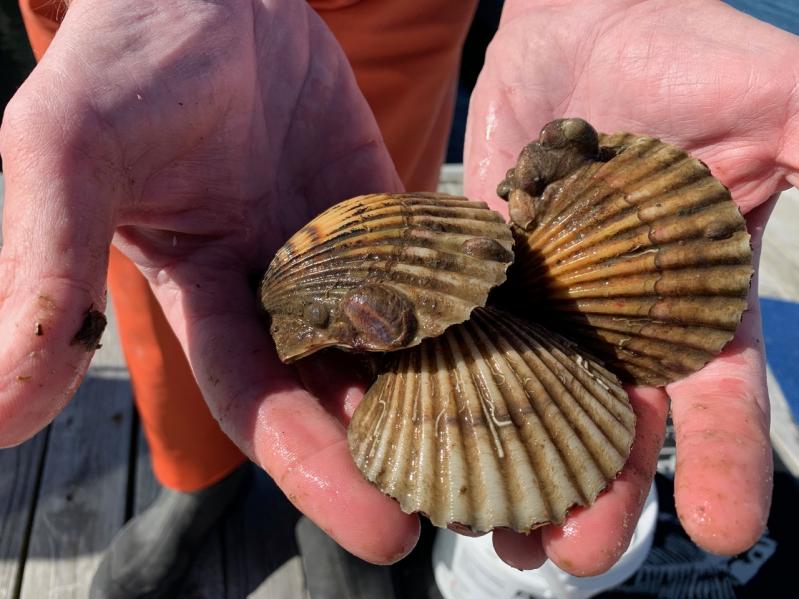Gov. Andrew M. Cuomo asked the U.S. Commerce Department on Friday for federal action to help New York's scallop fishery following the massive die-off in Peconic Bay scallops.
The bay scallop harvest is a historically significant source of income to the commercial fishing industry, fish markets, and restaurants throughout the region, but this year's harvest has been especially scant due to the die-off that ranged from 90 to 100 percent in many waterways. The governor has requested that the Commerce Department declare the bay scallop fishery a commercial failure and provide direct economic relief for the state's fishing industry.
"During the summer of 2019, there was a catastrophic die-off of adult bay scallops in Peconic Bays with estimates of more than 90 percent mortality of adult scallops throughout the Peconics and some areas documented with 100 percent mortality," the governor wrote to Commerce Secretary Wilbur Ross. "Although the exact cause of the die-off is unknown, scientists theorize that the mortality event was due to physiological stress during bay scallop spawning which was exacerbated by high summer water temperatures and low dissolved oxygen."
The State Department of Environmental Conservation is working with Cornell Cooperative Extension, Stony Brook University, and other partners to research and identify contributing factors that may have contributed to the recent die-off in the Peconic Bays. Scientists, as well as representatives of the D.E.C. and the Peconic Estuary Program, held a public symposium on the die-off on Friday night at the Stony Brook Southampton campus.
"New York is actively working to determine the cause of the recent bay scallop die-off and this federal designation would help our efforts to support commercial fishermen while addressing the population loss," the governor said in a statement issued on Friday. "We will continue to lead innovative programs to improve water quality and restore valuable shellfish populations. Protecting and enhancing New York's marine environment is vital to maintain robust economies in coastal communities that rely on healthy ecosystems and stable fisheries."
Congress designated the Peconic Estuary an estuary of national significance in 1992, leading to the creation of the Peconic Estuary Program. That action followed repeated brown tide algal blooms starting in 1985, which decimated the bay scallop population.
While annual bay scallop landings fell from a historic average of 300,000 pounds virtually to zero after the brown tide developed,
restoration efforts have been largely successful, with bay scallop landings exceeding 108,000 pounds in 2017 and 2018, the highest total since the brown tide blooms.
"The unexpected and sudden loss of the bay scallop resource represents a total collapse of this important commercial fishery," the governor wrote to Mr. Ross, "and devastating financial hardship for fishermen and maritime businesses that warrants immediate need of disaster relief to the industry."
"Immediate implementation of a disaster declaration is required," he wrote, "to provide direct economic relief for the New York fishing industry."
Governor Cuomo recently announced that in next year's State of the State address he will introduce Revive Mother Nature, a habitat initiative that will support critical environmental restoration efforts to help increase fish and wildlife habitat while also making communities more resilient in the face of climate change and severe weather.

